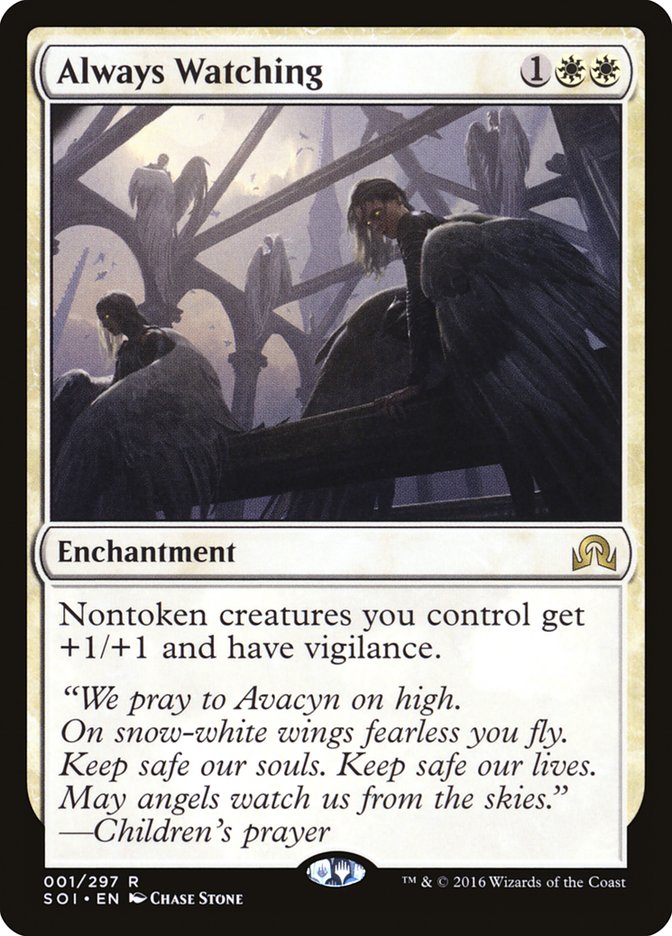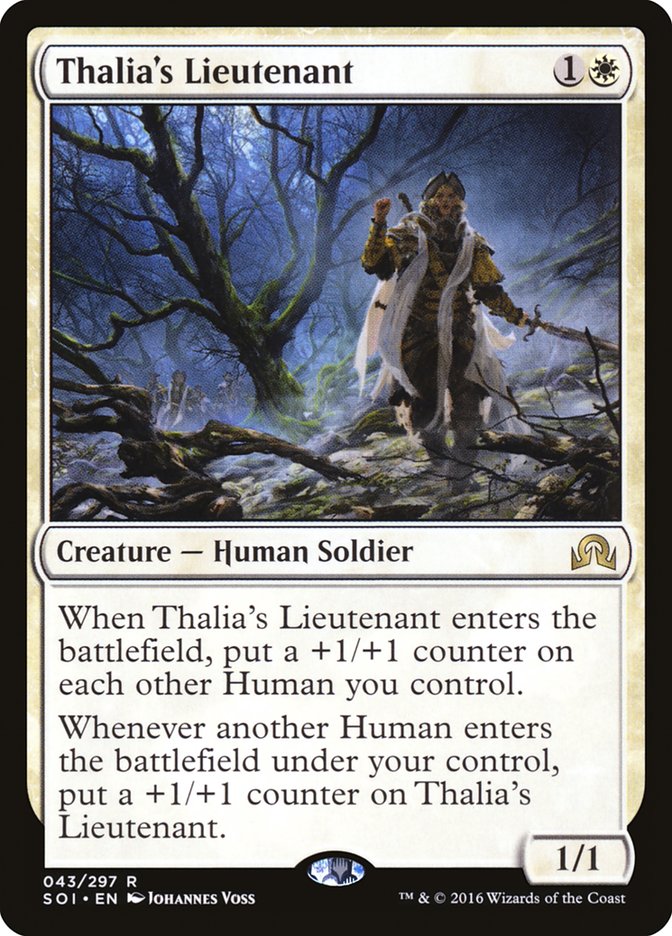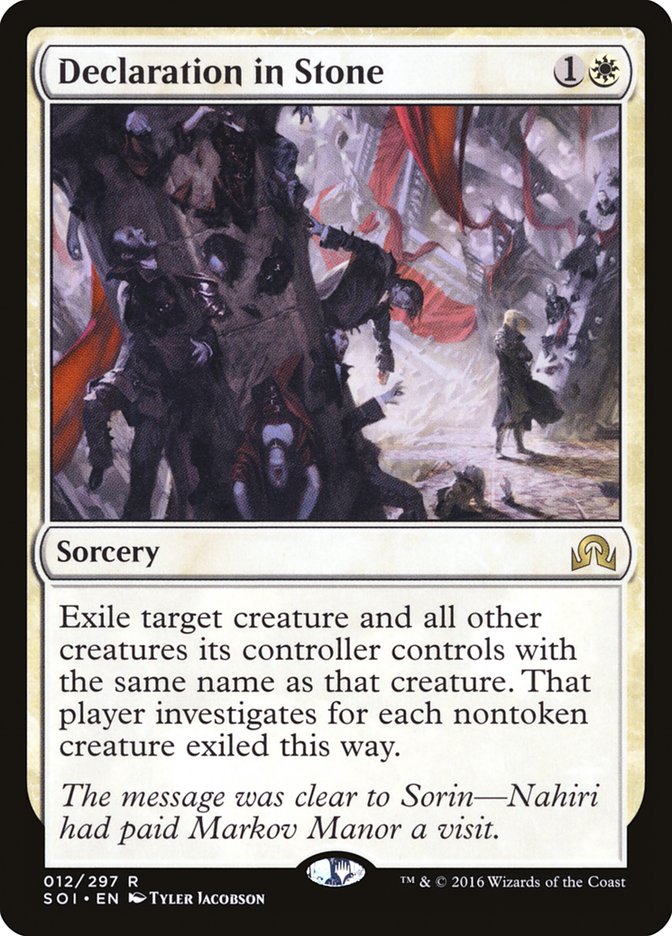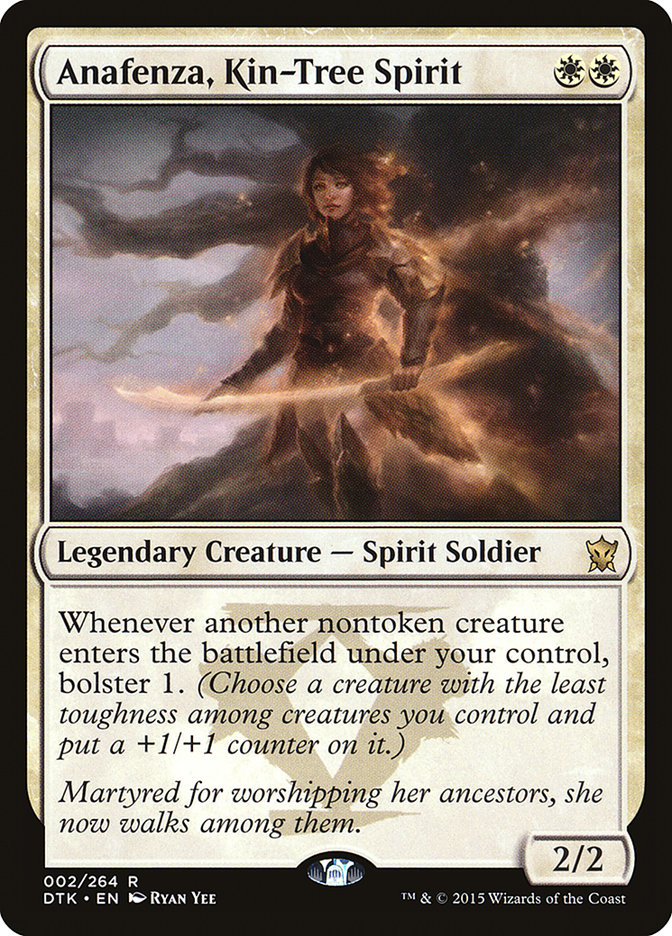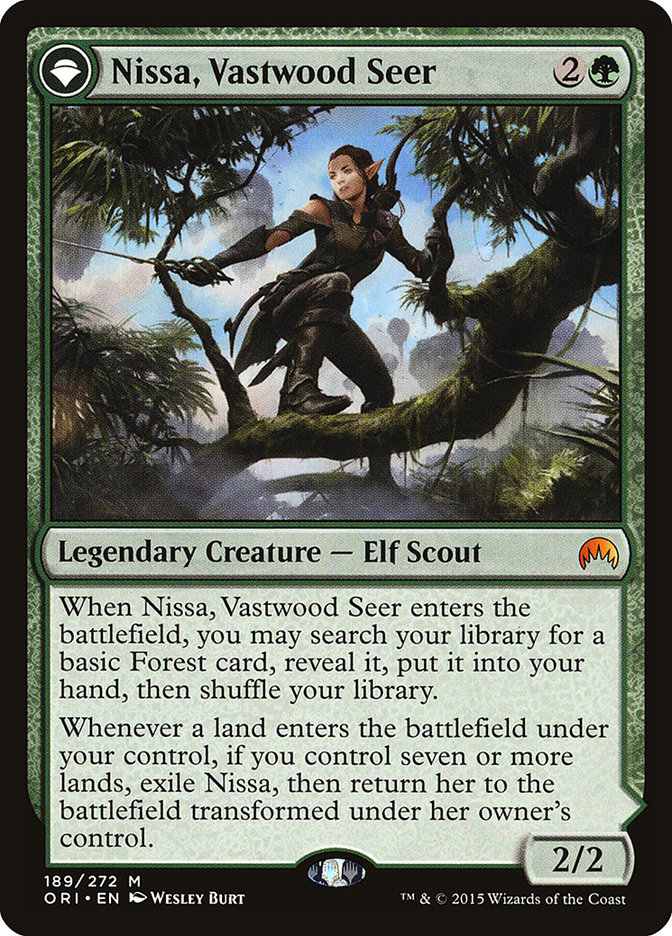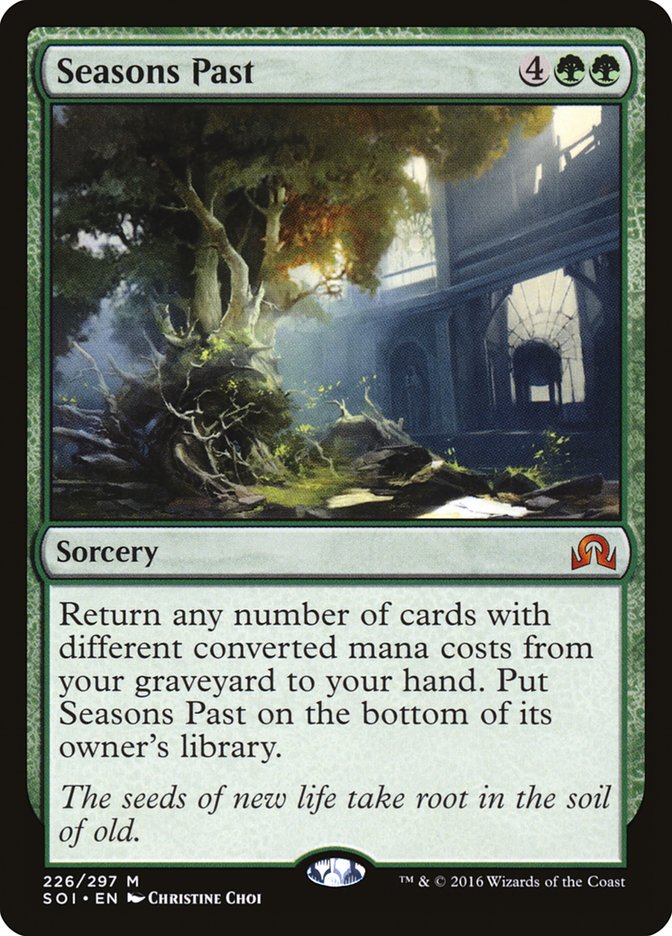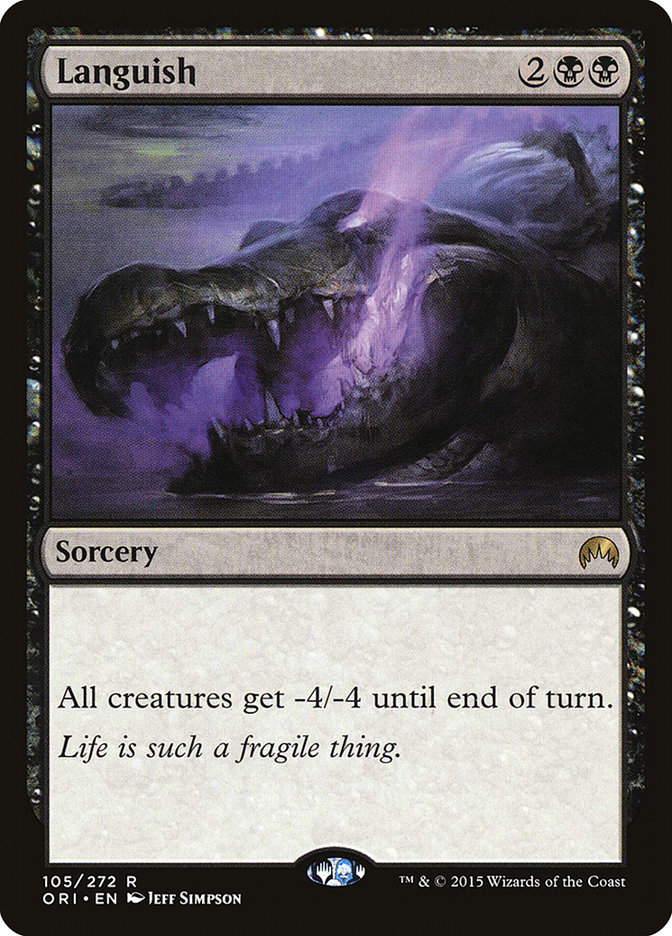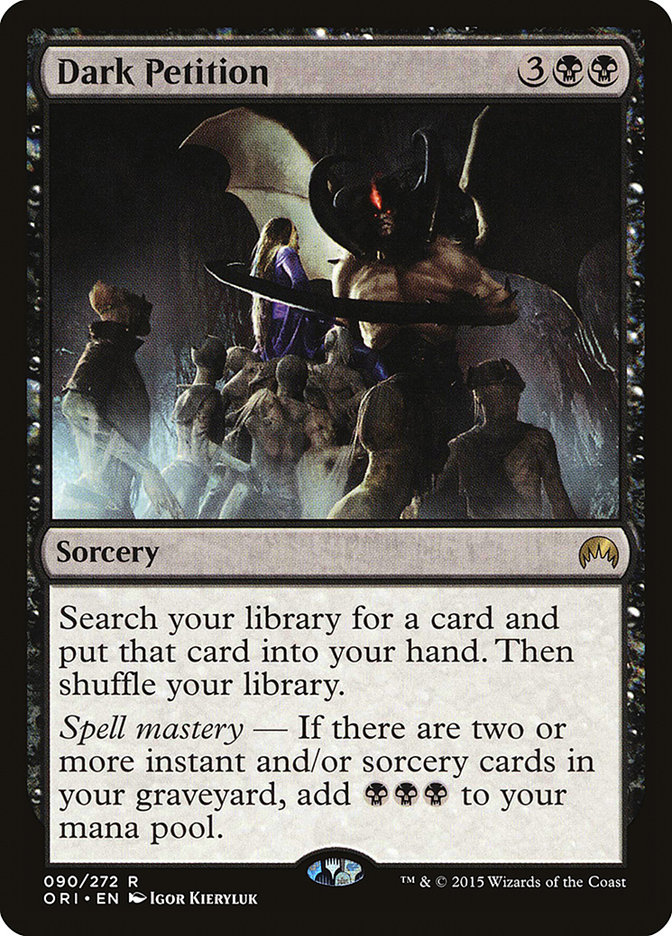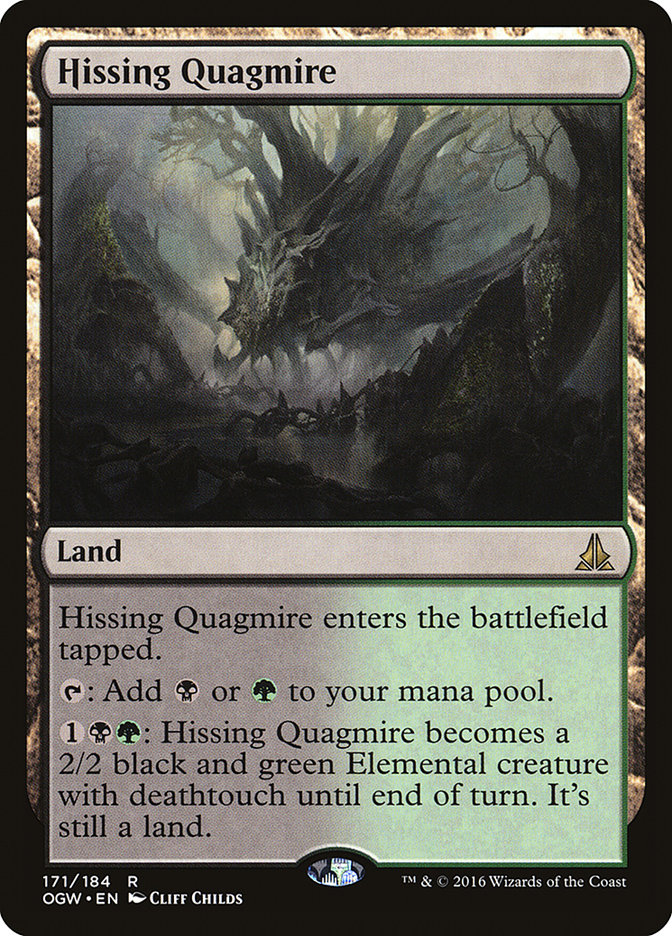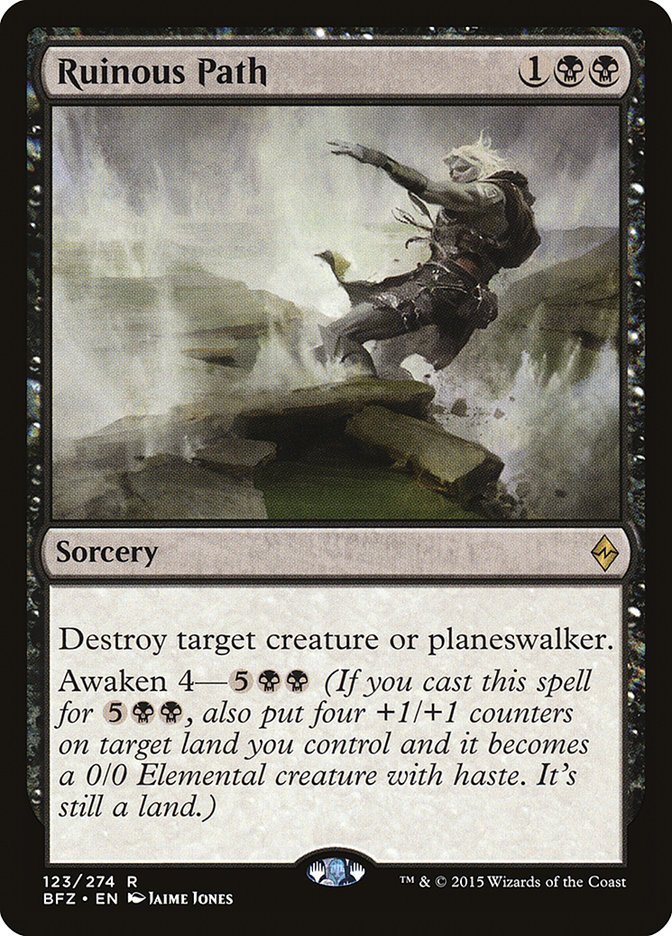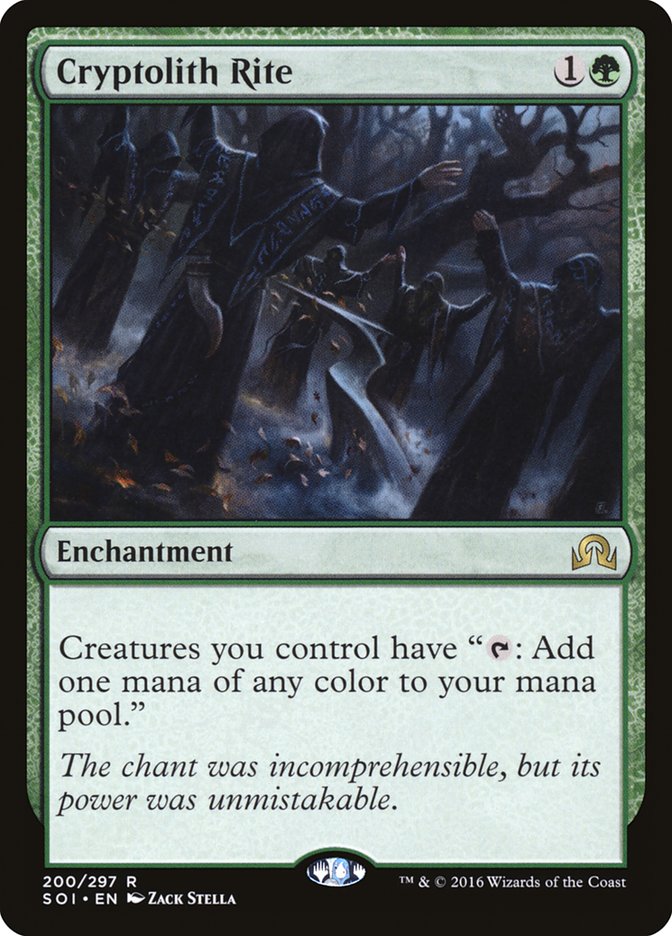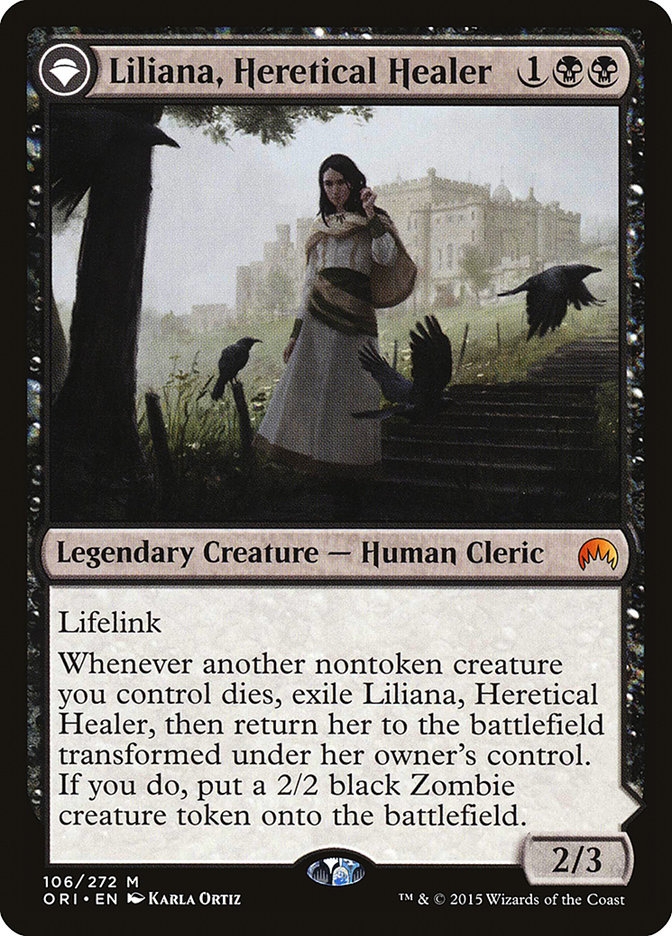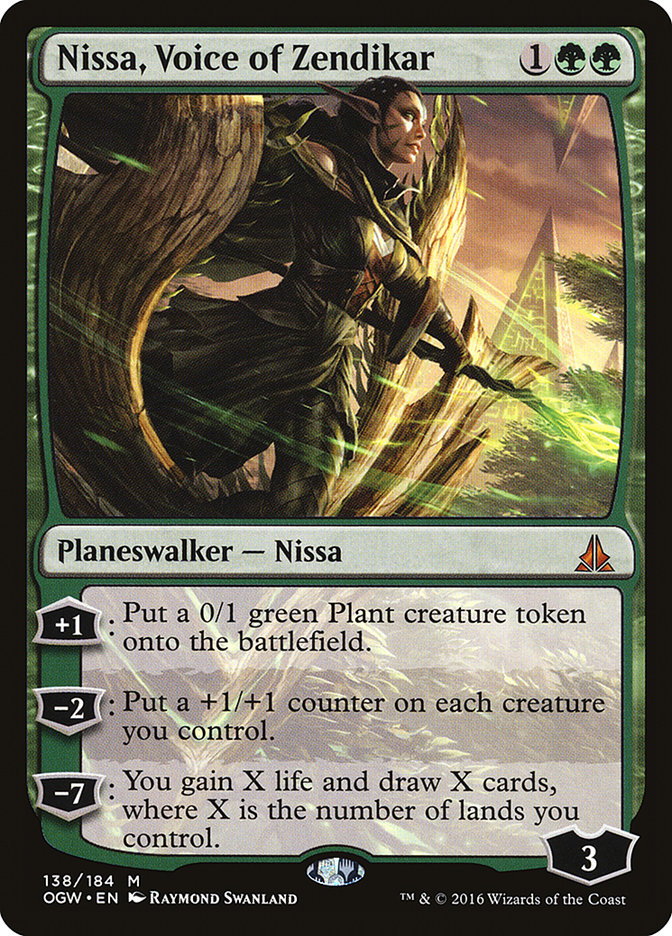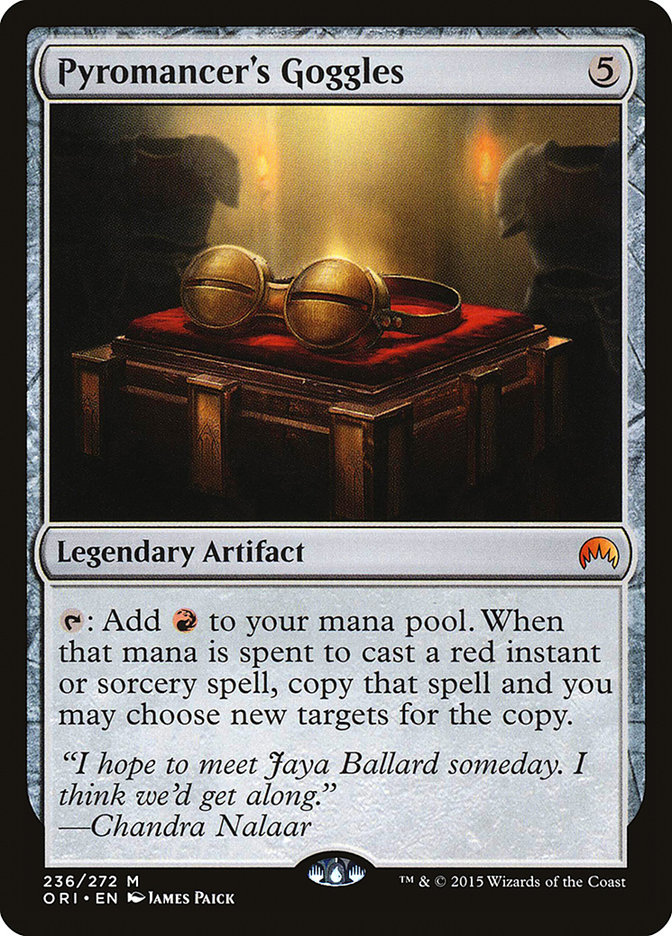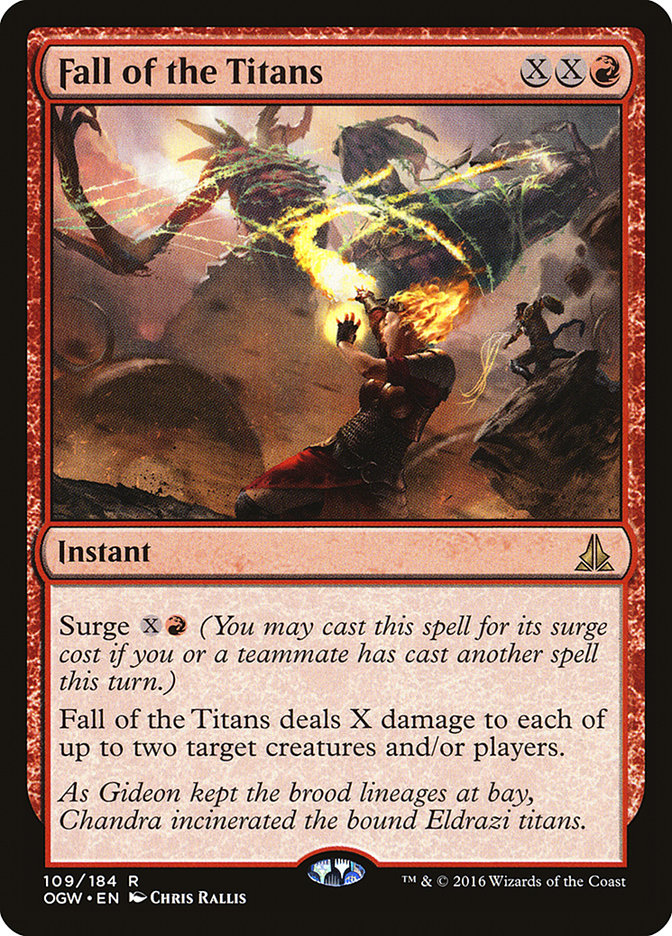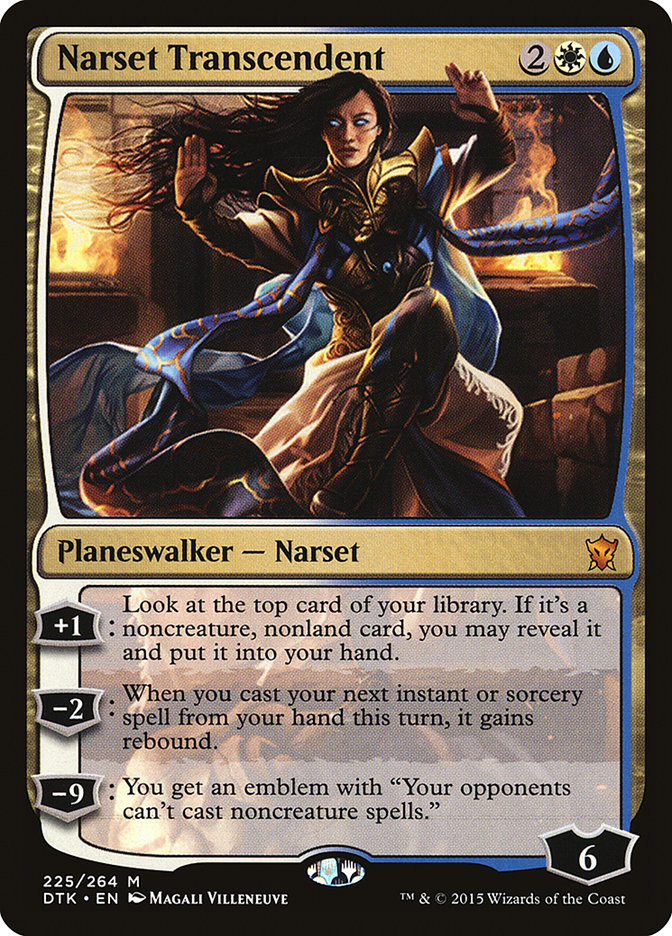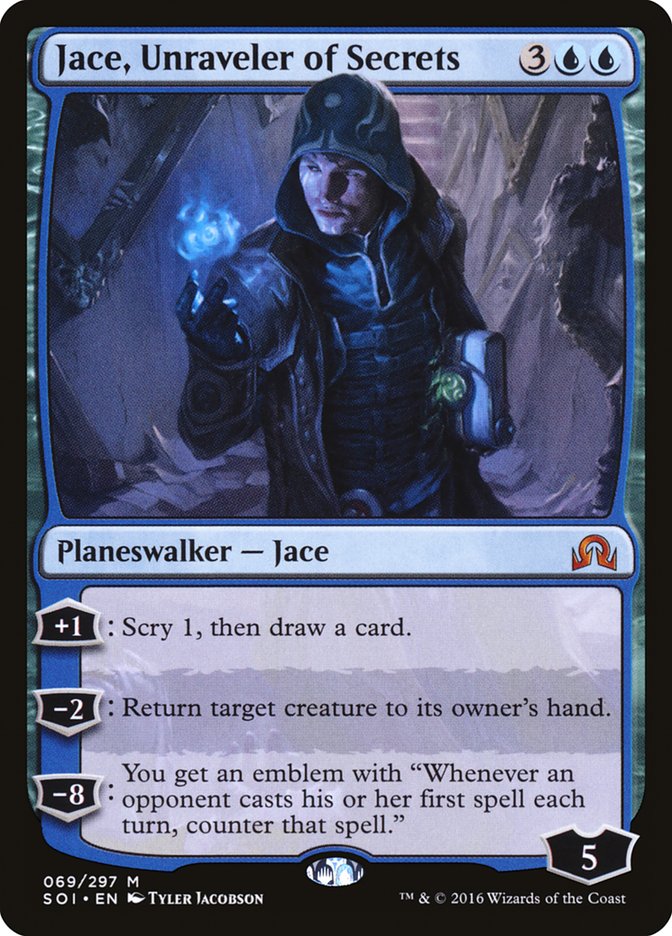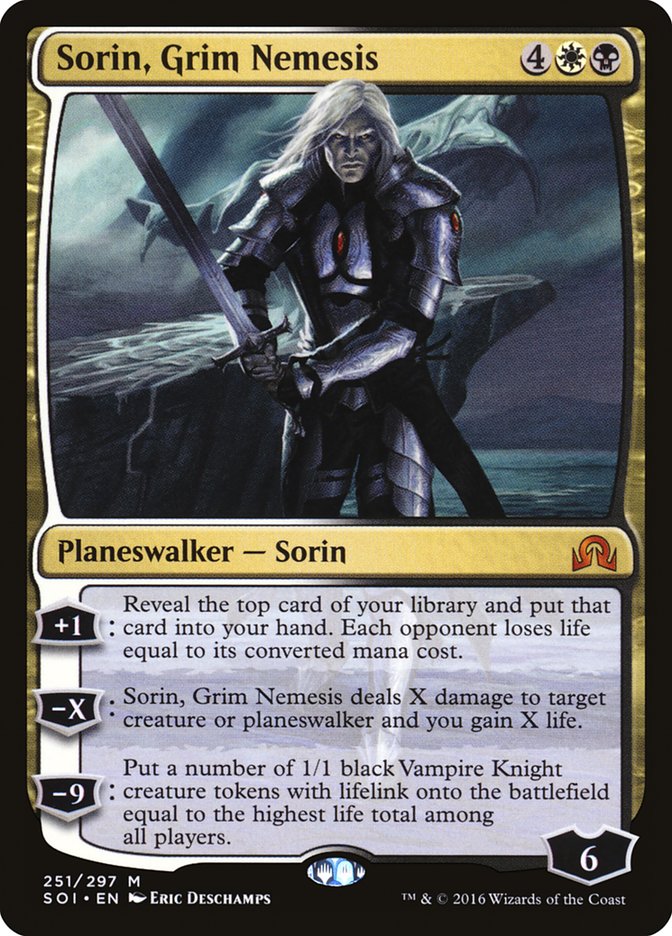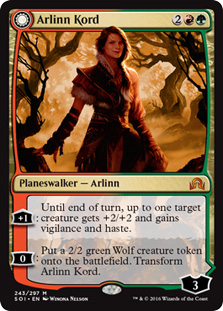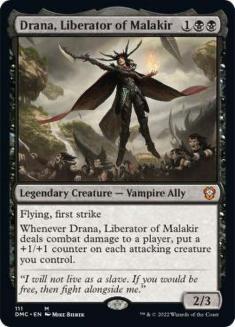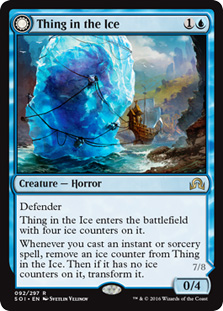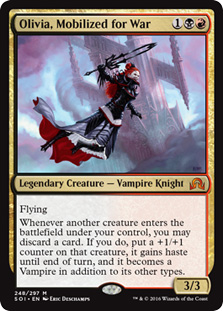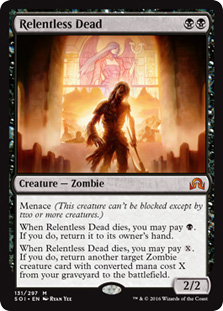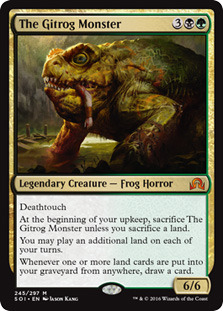 Sylvan Caryatid and Courser of Kruphix basically never went down in price.
Sylvan Caryatid and Courser of Kruphix basically never went down in price.
This time around (with a few notable exceptions), I expect most of the Pro Tour’s breakout cards to settle in at values quite a bit lower than they price points they’re at today. Eager Standard players have many new decks to choose from, the format will continue to evolve, and hundreds of speculators will be flooding the market with their weekend purchases as soon as they arrive in the mail. Don’t forget that Standard isn’t a zero-sum format: it’s significantly more expensive in the days right after a Standard Pro Tour, when demand is at its absolute highest. Selling into post-Pro Tour hype is almost always a great idea, and buying hot cards right after an exciting Pro Tour rarely works out.
That said, it’s worth taking a long look at all the decks that did well at the Pro Tour so we can chart our course forward. There are some cards that are still worth buying (though there were far more when I wrote my first draft of this article on Saturday afternoon, before Sunday’s Top 8 coverage) and plenty worth holding as the format continues to evolve. Let’s start with the format’s worst-kept secrets:
The Pre-PT Knowns: Bant Company and Humans
Going into Pro Tour Shadows over Innistrad, Bant Company and Humans were the decks to beat. At some point before the Pro Tour, everyone made the decision to either play one of these decks or find something that could take them on with consistency. Many of the large pro teams—and most of the better players—chose the latter option.
With a Day 2 conversion percentage of just 56%, Bant Company may have turned out to be a relatively poor choice. I’m not sure if that speaks to the quality of the deck all that much, though. Since the less experienced, unaffiliated pro players were more likely to choose one of these two decks, I’m not sure the conversion percentage stat is worth all that much in this case.
Regardless, Bant Company made it all the way to the Pro Tour finals and it will still be a major pillar of the format going forward. That said, I can’t imagine too many people will be rushing to put it together in time for FNM this week. If you don’t have the Jaces, Avacyns, and Collected Companies already, why bother making such a huge financial outlay for a deck that will continue to have a gigantic target on its back? Bant Company staples could stay at their current rates for a while, but I doubt any of them will see crazy spikes because of this deck’s performance.
Could this finally be the end of Jace, Vryn’s Prodigy ($89.99)? There were still eight maindeck copies in the Top 8, but it no longer has a stranglehold over the Standard format. His price chart has finally started trending down, and there’s a very real chance that Jace keeps slowly dropping between now and rotation. I doubt he’ll fall too far — he’s still very good in Standard and has game in Modern — but I’d be selling or trading my extra copies right about now.
Mono-White Humans may not have made the Top 8, but it had a 70% Day 2 conversion percentage, likely making it a better and more popular choice than Bant Company going forward. Kytheon, Hero of Akros ($15.99, out of stock) is the only mythic rare in Pat Cox and Craig Wescoe’s version of the deck, and because of that I expect it will maintain its $15+ price tag. While this isn’t a budget deck per se, it is one of the cheaper Tier 1 brews, which means that its key cards still have some room to grow.
Always Watching ($5.99, out of stock) and Thalia’s Lieutenant ($6.99, out of stock) are great cards, but they’re almost certainly at their peaks. They’re only playable in this deck, and we’re going to keep drafting Shadows over Innistrad for the next several months.
Declaration in Stone ($17.99, out of stock) is another card that has to be near its peak. It’s a rare from the current set, and it wasn’t omnipresent in the Top 8 decklists. Even though it’s likely to be very good as long as it’s Standard-legal, I doubt it’ll still be over $12 two months from now.
The deck’s other two rares, Knight of the White Orchid ($5.99, out of stock) and Anafenza, Kin-Tree Spirit ($2.45), are a little more interesting. The Knight has been printed so many times that I doubt it can sustain a price above $5 for long, but Anafenza, Kin-Tree Spirit feels underpriced to me at $2.45. While not all versions of Mono-White Humans run Anafenza, enough do that I could see her drifting closer to $5 in the coming days.
The Best of the New Brews
Let’s start with the greatest player of all time — Jon Finkel, aka Jonny Magic — and the craziest deck in the Top 8. If I had to pick a single deck from the Pro Tour to play at FNM next week, it would be this one. I doubt I’m alone in thinking that, either. This deck’s staple cards should sell very well over the next couple of days.
The deck has six mythic rares in the maindeck: two copies of Nissa, Vastwood Seer ($17.69); two copies of Kalitas, Traitor of Ghet ($29.99); and two copies of Seasons Past ($9.99).
Nissa should see a small uptick in popularity — her months-long price drop has certainly stabilized — but as a two-of that’s rotating in September, I doubt she’ll end up over $20 for long swaths of time or anything. Feel free to buy a couple of copies if you’re playing the deck, but avoid trading on spec.
Kalitas, Traitor of Ghet is a little more interesting. I can’t recommend buying the card at $30 (I called it a good trade target at $25 when I wrote the first draft of this article on Saturday), but Kalitas is incredibly well-positioned against the G/B Aristocrats deck that LSV piloted into the Top 8. If you expect that deck to be popular in your local metagame, as I do, Kalitas becomes even more essential. I could see this card spiking to $35 or $40 and seeing more play in multiple decks, but only if Standard prices stay high overall.
Seasons Past is certainly the biggest shock of the tournament — I, along with almost everyone else, figured it would be a bulk mythic. Heck, I gave it a best-case ceiling of just $6-$7. While I love this deck, I don’t expect Seasons Past to stick at $10 for long. It’s just a two-of, and it doesn’t have any other homes yet. Unless other deckbuilders figure out ways to use the card now that we all know it’s good, I expect it to settle in the $6-$8 range.
G/B Seasons Past has three four-of rares: Languish ($3.75, out of stock); Dark Petition ($7.99, out of stock); and Hissing Quagmire ($5.99).
Languish won’t be $3.75 when it’s restocked; it’ll be somewhere closer to $8 or $10, and deservedly so. Since so many of the best decks in Standard rely on dorky little Humans or Collected Company targets, Languish is at its best right now. It will probably fluctuate between $4 and $12, depending on how the metagame continues to evolve. It was also in the Esper Control and Esper Dragons decks that made Top 8, so it could stay close to the double-digit mark. Regardless, I’m selling any copies I’m not currently using.
Could Dark Petition stick around at $8? This deck is great, and Dark Petition does see play in both Casual and Eternal formats, but it’s still a niche rare that’s rotating in September. Seth Manfield’s Esper Control deck runs a couple of copies of the card as well, making me think that it won’t drop below $5 for a while, but I’m still selling if I can get full retail right now. That jump from $2 to $8 is just too tempting for me not to cash out.
On the flip side, Hissing Quagmire feels underpriced at $6. It’s a small-set rare that’s a four-of in G/B Seasons Past as well as G/B Company, arguably the two biggest breakout decks at the Pro Tour. If that’s not the recipe for a $10 card, I don’t know what is.
Last, Jon Finkel’s deck runs three copies of Ruinous Path ($1.99). There’s not a ton of upside here, since a lot of Battle for Zendikar was opened, but this staple removal spell was also in Seth Manfield’s Top 8 deck. I could easily see it hit $5 at some point this summer.
Speaking of black and green, let’s skip over to Luis Scott-Vargas’s B/G Aristocrats deck. With a whopping 92% Day 2 conversion rate, this deck was certainly one of the more exciting brews to come out of the Pro Tour.
Collected Company isn’t cheap — $23.25 for a rotating rare whose namesake deck had a mediocre Day 1 is quite expensive, in fact — but I agree with what Luis: Collected Company is probably the best card in Standard right now. And considering its game in Modern, I doubt we’ll see the card drop in price anytime soon. If you want a playset of these, you’re going to have to pay up. There are worse buys to make, though; Collected Company is so good in so many decks that I doubt it’ll start losing value anytime soon.
Luis’s deck also ran three copies of Cryptolith Rite ($7.99), the card that enabled most of its especially broken starts. Considering it was a $4-$5 rare before the weekend started, it didn’t actually spike all that much. Cryptolith Rite is a powerful enough card in Casual play that I suspect it can sustain a $6+ price tag for a little while. Just be careful; the price could see some wild swings over the next two days as speculators look to dump their extra copies on the secondary market. If fewer people want to build this deck than expected, the price could drop in an awful hurry.
Liliana, Heretical Healer ($24.99) is only a two-of in this deck, but she’s an incredibly popular Casual card. Heck, she’s never dropped below $15, even when she wasn’t seeing any play. I could easily see her spending some time above $30 if G/B Company ends up as a Tier 1 deck going forward. I’m okay trading for these at current retail.
Westvale Abbey ($11.99) was also key to this deck’s success, and the fact that it’s also a three-of in the Pro Tour-winning G/W Tokens list makes me feel like it’s potentially undervalued at $12. I know, I know, it’s a large-set rare…but wasn’t the Abbey $20 a few weeks ago? And wasn’t it one of the underrated stars of the Pro Tour? And might it see some play in Modern? Thoughtseize money, $15-$18, isn’t out of the question.
It didn’t spend much time on-camera during the first two days of the Pro Tour, but G/W Tokens also had a 90% Day 2 conversion rate and was one of the event’s major breakout decks. There are three four-of mythic rares in the main deck: Gideon, Ally of Zendikar ($23.19); Nissa, Voice of Zendikar ($14.65); and Archangel Avacyn ($49.99, out of stock).
Neither Gideon nor Nissa saw price spikes during the first two days of the Pro Tour, but they’re both due for a jump now that Steve Rubin’s deck has taken home the top prize. If you’re going to target one of these cards, grab Nissa; she’s cheapest and has the farthest to rise. I could see her ending up at $25 or $30, easily.
Archangel Avacyn had a decent tournament—she’s a four-of in this deck and a two-of in Mengucci’s Bant Company list—but at $50, she had to win the Pro Tour to sustain a $30+ price tag. Since that happened, I think it’ll be a while before she starts to drop off. I’d sell if she ends up at $60 or $70 tomorrow, but don’t expect demand for this card to start falling anytime soon. She’s in a class of her own at the top of the Shadows over Innistrad mythic rankings.
G/W Tokens also has a bunch of three-of and four-of rares worth talking about: Hangarback Walker ($8.65), Sylvan Advocate ($8.99), Dromoka’s Command ($4.99), Oath of Nissa ($3.99), Canopy Vista ($5.99), and Fortified Village ($3.99). These cards all feel reasonably close to their proper values to me, so there’s no reason to take any action if you aren’t working toward building this deck. They might spike by a dollar or two thanks to the PT win, but there aren’t any must-buys or must-sells in the bunch. It is worth noting that Tragic Arrogance ($0.59) is a key card out of the sideboard, and I wouldn’t be surprised to see it end up closer to $3 or $4.
It’s hard to know what to talk about with Pyromancer’s Goggles ($12.99, sold out) because the card was in lots of different decks last weekend. Two brews, Brad Nelson’s Goggles Ramp and Luis Salvatto’s R/W Eldrazi Goggles, made the Top 8 in addition to the U/R-style Goggles decks that were running around on the first two days of the Pro Tour.
First off, it’s pretty clear that Pyromancer’s Goggles is for real. I bought several copies for $2 each a few weeks back and sold them for $6-$7 before the Pro Tour. Too bad; I wouldn’t be surprised if Pyromancer’s Goggles end up in the $18-$20 range for a while. It’s too early to say how many Goggles decks will end up in the format’s top tier, but at this point I think we can safely rule out the card being a buyout-driven bust.
Brad Nelson’s Goggles Ramp deck ran a few cards worth talking a little more about. World Breaker ($8.99) hasn’t seen a price increase yet, but it’s a small-set mythic that’s integral to this deck’s function. Kozilek’s Return is an even better buy: it’s a mythic rare that this deck needs four copies of to function, and it’s still just $7.99. Fall of the Titans ($0.69, sold out) is a must-buy at under a buck considering how good it is with the Goggles. Traverse the Ulvenwald ($4.99) is fairly priced, but it’s worth noting that this card has a very high ceiling if it finds another home or two. Chandra, Flamecaller ($29.49) continues to justify her high price tag.
Salvatto’s Goggles build is quite different. It also has Fall of the Titans and Chandra, Flamecaller, but instead of World Breaker and Dragonlord Atarka, it runs Eldrazi Displacer ($3.99), Goblin Dark-Dwellers ($3.99), Matter Reshaper ($3.49), and four copies of Thought-Knot Seer ($8.75). None of these cards feel particularly undervalued to me, though it’s worth noting that several other high-finishing decks had multiple copies of Goblin Dark-Dwellers. I still feel like that card is perpetually on the verge of breaking out.
Last, let’s take a quick look at the Top 8’s two Esper decks. Shota Yasooka’s Esper Dragons deck is similar to brews we’ve seen for a while now, with Jace, Languish, Dragonlord Ojutai ($19.59), Dragonlord Silumgar ($6.69), Painful Truths ($2.49), and a singleton Ob Nixilis Reignited ($8.65). While only one of the Pro Tour’s three Esper Dragons players made Day Two, the fact that Yasooka reached the Top 8 should keep this deck in the public eye for a little longer. It’s not sexy or new or exciting, however, so I can’t imagine too many of these cards are due for a major price spike.
You know what is sexy and new and exciting, though? Seth Manfield’s Esper Control list. Instead of the Dragonlords, we get a full grip of planeswalkers: two copies of Jace, Unraveler of Secrets ($14.99); three copies of Narset Transcendent ($9.69); two of Sorin, Grim Nemesis ($24.99); and one Ob Nixilis Reignited. While none of these cards have seen PT-related price spikes yet, this is probably the control deck most of your local grinders will want to put together. Narset supplies are dwindling, and I could see a brief spike toward $15 or $20 before she rotates out of Standard. This deck should also keep Jace and Sorin from dropping off too much more, if at all.
Interesting Decks That Didn’t Make Top 8
Enough U/W Humans builds did well on Day 2 that I’m still not sure which build is better, U/W or Mono-White. Expect both to keep showing up and doing well at your local FNM.
Grzegorz Kowalski and David Mines both finished 8-2 in the Standard portion of the Pro Tour with a Sultai Midrange deck. It included a lot of cards we’ve been talking about in other decks: Ob Nixilis Reignited; Dragonlord Silumgar; Kalitas, Traitor of Ghet; Sylvan Advocate; Tireless Tracker; Traverse the Ulvenwald; etc. Again, Traverse the Ulvenwald is a pretty exciting card if it ends up finding a home in two or three top decks.
Rob Pisano went 8-2 with a Jeskai Control deck that ran four copies of Nahiri, the Harbinger ($11.99) as well as Avacyn’s Judgment ($1.49), Descend upon the Sinful ($2.99), and Ojutai’s Command ($2.39, out of stock). The deck also runs four copies of Jace, Vryn’s Prodigy, so it’s not exactly accessible, but I saw enough out of Nahiri this weekend that I wouldn’t be surprised if she ends up in a Tier 1 deck sooner or later.
Batuhan Ucuzal’s 8-2 W/R Displacer deck also ran three copies of Nahiri alongside Gideon, Chandra, Archangel Avacyn, and Eldrazi Displacer. If one of these players had done slightly better during the Limited portion of the event, Nahiri would probably be over $20 right now.
Oliver Tiu’s 8-2 Grixis Control deck is also pretty great. Aside from three copies of Chandra and two of Jace, the deck runs Kalitas, Goblin Dark-Dwellers, Kolaghan’s Command, and Ruinous Path.
The Weekend’s Biggest Busts
Arlinn Kord ($29.99): Shadows over Innistrad’s coolest-looking planeswalker was nowhere near the tournament tables last weekend. At this point, I’m expecting a fast drop to $15. If she doesn’t see play over the next month, she might even hit $10.
Drana, Liberator of Malakir ($14.19): Drana continues to massively underperform expectations. I’m thinking $7-$8 again.
Thing in the Ice ($12.99): Thing in the Ice was kicking around Day 2, but it wasn’t even in either of the Goggles decks that made Top 8. Next stop, $6 rare.
Olivia, Mobilized for War ($12.99, out of stock): Vampires were a complete bust at the Pro Tour. Keep Olivia in mind when the Eldritch Moon spoilers start rolling in, but she’s heading under $10 in the meantime.
Relentless Dead ($11.99): What does it say about this card that one of the breakout decks in the tournament is a black-based attrition deck…and even G/B Company doesn’t want this? Future $7-$8 mythic with room to keep falling.
The Gitrog Monster ($6.99): Casual interest will keep this card above $5 for a while, but I doubt we’re going to see it in Standard anytime soon.
Abbot of Keral Keep ($4.99): Don’t forget that Abbot sees some play in Modern, but for now it appears as though red aggro isn’t going to be a thing this Standard season.
The Organized Play Changes
In case you weren’t watching the Top 8 yesterday (those European time zones are rough for us Americans on a Sunday morning), Wizards of the Coast made two pretty major announcements.
First, there will no longer be a Modern Pro Tour. There will still be a Modern PTQ/PPTQ season, but the event it will qualify you for will be Standard. This is a big change, but not a surprising one. R&D felt that it had to make a big change before each Modern Pro Tour, and over the past few years, that has meant banning of one of the format’s best decks.
This has made investing in Modern a scary proposition at the FNM/PPTQ level; why spend hundreds of dollars and hundreds of hours buying and testing a deck that is likely to be banned? WotC was very conscious of this, and they decided to fix it by eliminating the need to play Modern on Magic’s biggest stage.
I don’t think this will do anything to hurt the price of Modern cards over the long haul. For 99.9% of Modern players, this is not a meaningful change. There is some fear that WotC will stop testing for and supporting Modern because of this, allowing the format to grow stale or overrun with some future menace, but I think those worries are overblown. This change clearly shows that WotC is dedicated to making sure that Modern remains a fun, vibrant format for years to come.
What does this change mean to you? Well, if you’re an aspiring pro who dislikes Modern, you no longer have to play it. If you’re already an avid Modern player, you can breathe a little more easily; there won’t be any fewer Modern events for you to play in, and your deck is much less likely to get banned next January. If you’re interested in getting into Modern, you can feel free to choose a deck without having to worry as much about a ban.
If you’re a speculator, expect fewer wild price fluctuations. There won’t be as many cards banned, nor as many crazy buying and selling opportunities during the weeks before and after the Modern PT. Overall, things should stabilize a bit. I’d also look more seriously into buying currently banned cards. Aaron Forsythe’s announcement seemed to indicate a willingness to keeping the banned list as small as possible. Could we see Deathrite Shaman; Bloodbraid Elf; Jace, the Mind Sculptor; or even Splinter Twin again?
The other organized play announcement, the removal of Platinum pro/Hall of Fame bonuses coupled with an increase in prize payouts at Worlds, will probably have hundreds of thousands of words written about it over the coming weeks. As someone who has never been a professional Magic player, I’m having a hard time separating hyperbole from true concern. Many people I trust have assured me that this is not a big deal, while others have expressed fear that this will seriously impact the Pro Tour going forward. It is certainly rotten for the current Platinum pros, but from an overall finance perspective, I’m more concerned about how it impacts incentive going forward.
Will fewer people play high-level Magic now that it is more difficult to survive as a high-level pro? I don’t know. I’m not panicking — I assume others will do that for me — but I do think it’s worth monitoring overall tournament attendance as well as pro player attendance over the next few months. Deep down, I have to believe that if this move truly does prevent the best players from continuing their Magic careers, WotC will find a way to fix things.



